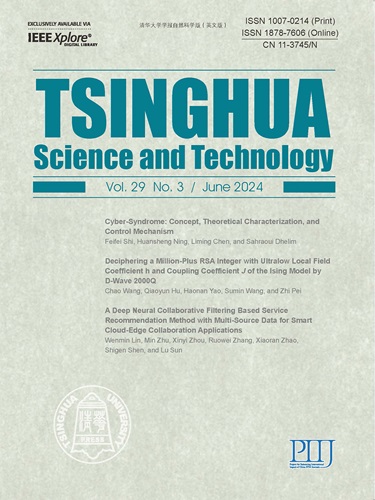探索用于事件预测的时态知识图谱中上下文动态的变色龙效应
IF 3.5
1区 计算机科学
Q1 Multidisciplinary
引用次数: 0
摘要
在许多公共安全领域,如内乱、流行病和犯罪等,预测未来事件的能力为社会和网络空间带来了巨大的好处。新事件的发生往往与历史事件和并发事件相关或依赖于历史事件和并发事件。现有的许多研究通过序列和结构模型来学习事件发生过程,但这些模型存在预测效率低和预测不准确的问题。为了更好地理解事件预测任务并描述新事件发生的特征,我们利用认知神经科学学科的人类认知理论,为算法设计和事件预测寻找可用线索。受双重过程理论的启发,我们提出了一种用于事件知识挖掘和预测的两阶段学习方案。首先,我们根据历史固有知识筛选出候选事件。然后,我们通过探究最新的相关事件,重新对候选事件进行排序。我们提出的模型模拟了一种被称为 "变色龙效应 "的社会学现象,并包含一种新的目标殷勤图协同学习机制,以确保更好地理解与事件相关的复杂演变模式。此外,我们还采用了自监督对比学习来缓解图学习中存在的过度平滑问题,同时提高模型的可解释性。实验证明了我们方法的有效性。本文章由计算机程序翻译,如有差异,请以英文原文为准。
Exploring the Chameleon Effect of Contextual Dynamics in Temporal Knowledge Graph for Event Prediction
The ability to forecast future events brings great benefits for society and cyberspace in many public safety domains, such as civil unrest, pandemics and crimes. The occurrences of new events are often correlated or dependent on historical and concurrent events. Many existing studies learn event-occurring processes with sequential and structural models, which, however, suffer from inefficient and inaccurate prediction problems. To better understand the event forecasting task and characterize the occurrence of new events, we exploit the human cognitive theory from the cognitive neuroscience discipline to find available cues for algorithm design and event prediction. Motivated by the dual process theory, we propose a two-stage learning scheme for event knowledge mining and prediction. First, we screen out event candidates based on historical inherent knowledge. Then we re-rank event candidates by probing into the newest relative events. Our proposed model mimics a sociological phenomenon called “the chameleon effect” and consists of a new target attentive graph collaborative learning mechanism to ensure a better understanding of sophisticated evolution patterns associated with events. In addition, self-supervised contrastive learning is employed to alleviate the over-smoothing problem that existed in graph learning while improving the model's interpretability. Experiments show the effectiveness of our approach.
求助全文
通过发布文献求助,成功后即可免费获取论文全文。
去求助
来源期刊

Tsinghua Science and Technology
COMPUTER SCIENCE, INFORMATION SYSTEMSCOMPU-COMPUTER SCIENCE, SOFTWARE ENGINEERING
CiteScore
10.20
自引率
10.60%
发文量
2340
期刊介绍:
Tsinghua Science and Technology (Tsinghua Sci Technol) started publication in 1996. It is an international academic journal sponsored by Tsinghua University and is published bimonthly. This journal aims at presenting the up-to-date scientific achievements in computer science, electronic engineering, and other IT fields. Contributions all over the world are welcome.
 求助内容:
求助内容: 应助结果提醒方式:
应助结果提醒方式:


